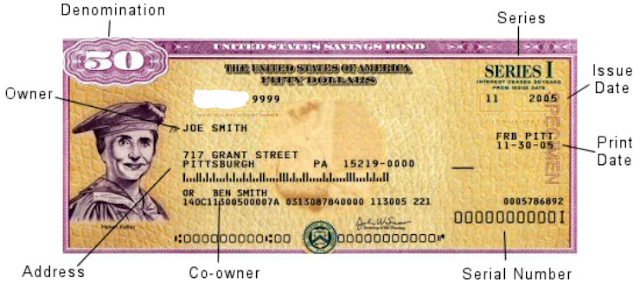At the time I'm writing this, United States I bonds are paying more than 3% interest. While they're not as easy to get as when I was a kid, savings bonds are still as good of a way as any for kids to learn about savings. The gang has been pestering me for two weeks, (pestering at my request, or I'd forgett to do it), to use a $100 windfall they came upon to buy savings bonds for them. I finally did it! Here's what I learned.
Kids have to have an account managed by an adult
I'm not happy about this, but there it is. Sure, I'll write my politicians, but in the meantime, the kids' parent has to buy and manage the bonds in the kid's name. That means the parent needs an account on TreasuryDirect. This is not an easy task, but it's also not insurmountable. It's also something I set up for myself years ago and no longer remember how to do, so no info on that here except to click the link a few sentences back and have at it.
Actually, one really big note
The site will have you setup security questions. Make sure you can remember them. The site will ask you one of the questions before you do virtually anything on the site. If you can't answer, you get to go through the process of being locked out and regaining entrance. I don't knokw about the process now, but it used to involve making a phone call and waiting on hold. Don't forget your answers.
As a parent, you'll create a 'linked account' for each kid
At present, there's a tab on the TreasuryDirect site that's labeled ManageDirect (it's a play on words, get it? Hooboy.) Anyway, you'll click that, then click 'Establish a Minor Linked Account'. After that, fill in the form. You'll need the kid's social security number, but that's about it as far as things you might need to look up. It's actually a pretty simple form at the time of this writing.
Actually buying the bonds
Here's the tricky bit I encountered today. Once you hit the 'Submit' button after the final review of the kid's information that you input, you'll be logged into their linked account on the next page.
You don't need to log into it because you'll already be there. I spent a minute or two trying to access my linked accounts which of course I couldn't do because I was already logged into the kid's linked account.
OK, so, click on 'BuyDirect', (again, so clever, snort), choose the kind of bond you'd like to buy for the kid. Here are the rates for EE and I bonds at the time of this writing, and here is the current rate for an I bond. I bonds earn rates based on inflation rates that are updated every six monhts. EE bonds earn a varuabke rate based on when you buy them with a few caveats.
The last weird thing
Buying the bonds is pretty easy. Getting back to your own account, not so much till you know the trick. I mistook the link in the upper right corner of every page to be a link to the kid's account. It wasn't. It was a link back to mine. Once I clicked it out of shere lack of anything else to try, I was back in my account where I could set up a linked account for the next kid.
Anyhow, have fun if savings bonds are your thing! I'm off to write my local politicians about this nonsense that when I was a kid, I could take $25 of lawn mowing money into the bank and walk out with a savings bond.

Comments
Post a Comment
Please leave your comments on this topic: